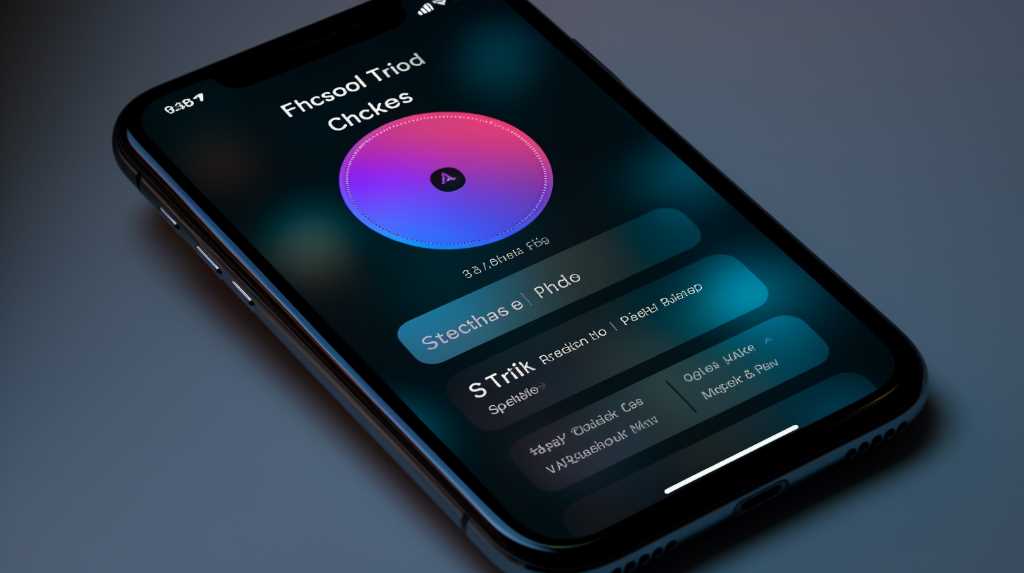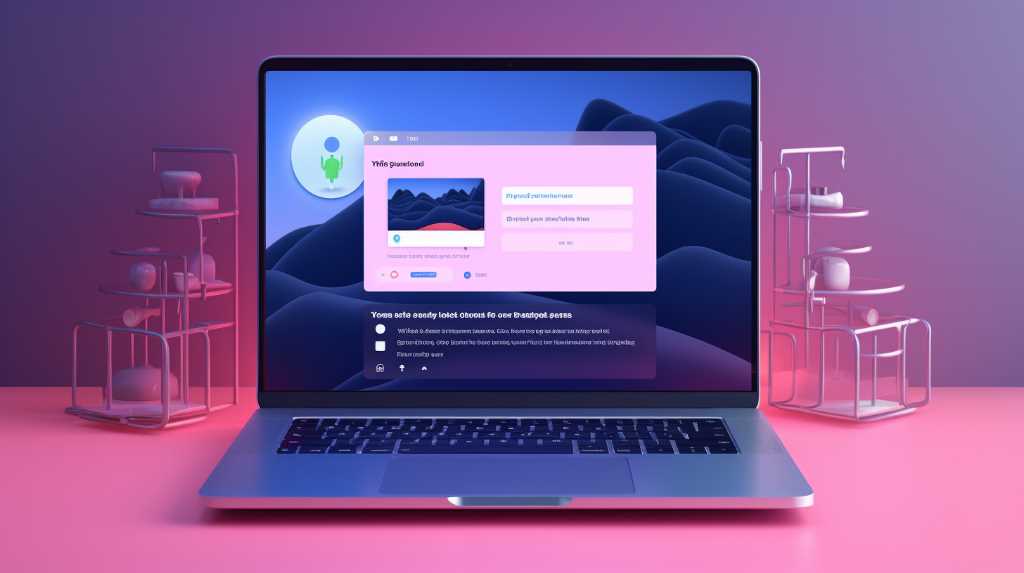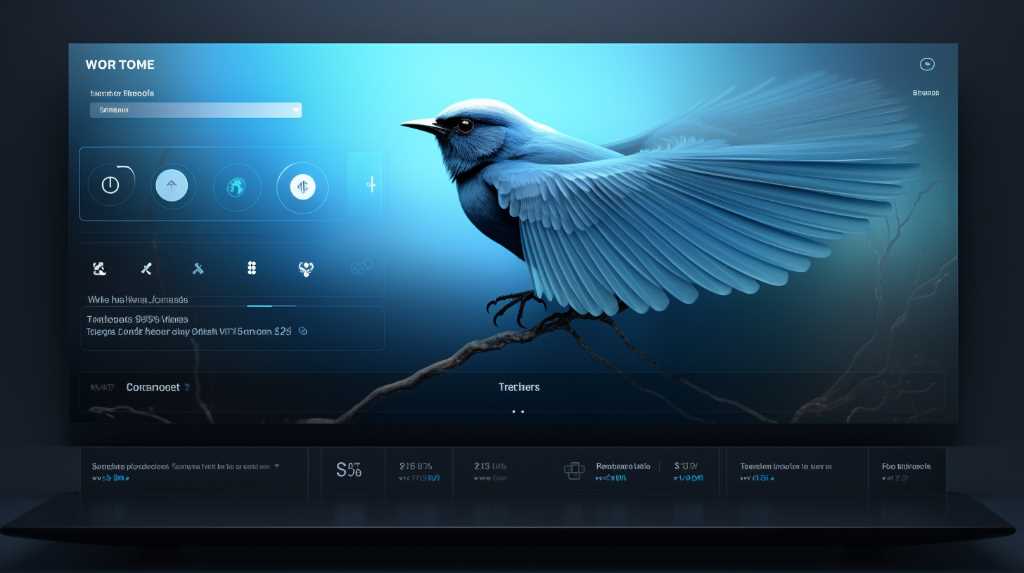Are you concerned about your privacy on social media? In this article, we will explore the importance of privacy settings and how they can help you protect your personal information. Discover how to understand and manage your digital footprint on platforms like Facebook, Instagram, Twitter, and LinkedIn. By adjusting your privacy settings, you can safeguard your data and have more control over who sees your posts and personal details.
 You should take control of your social media privacy by adjusting your privacy settings. In our digital age, where almost everyone is connected through various social media platforms, it's crucial to prioritize your privacy. By adjusting your privacy settings, you can ensure that you have control over the information you share and who's access to it.
One of the main reasons why adjusting your privacy settings is important is to protect your personal information. Social media platforms often collect data about their users, which can be used for targeted advertising or even shared with third parties. By adjusting your privacy settings, you can limit the amount of information that's collected and shared, thus reducing the risk of your personal data being misused.
Another reason to adjust your privacy settings is to safeguard your online reputation. What you post on social media can have a significant impact on how others perceive you. By controlling who can see your posts and other information, you can ensure that only the people you trust have access to it, minimizing the chances of any negative consequences.
Furthermore, adjusting your privacy settings can also help protect you from potential cyber threats. By limiting the visibility of your personal information, you're less likely to become a target for cybercriminals or identity thieves who may use your information for malicious purposes.
You should take control of your social media privacy by adjusting your privacy settings. In our digital age, where almost everyone is connected through various social media platforms, it's crucial to prioritize your privacy. By adjusting your privacy settings, you can ensure that you have control over the information you share and who's access to it.
One of the main reasons why adjusting your privacy settings is important is to protect your personal information. Social media platforms often collect data about their users, which can be used for targeted advertising or even shared with third parties. By adjusting your privacy settings, you can limit the amount of information that's collected and shared, thus reducing the risk of your personal data being misused.
Another reason to adjust your privacy settings is to safeguard your online reputation. What you post on social media can have a significant impact on how others perceive you. By controlling who can see your posts and other information, you can ensure that only the people you trust have access to it, minimizing the chances of any negative consequences.
Furthermore, adjusting your privacy settings can also help protect you from potential cyber threats. By limiting the visibility of your personal information, you're less likely to become a target for cybercriminals or identity thieves who may use your information for malicious purposes.
 To fully comprehend the impact of your online presence, it's important to understand and evaluate your digital footprint. Your digital footprint refers to the trail of information you leave behind when you interact with the internet. It includes the websites you visit, the social media posts you make, the photos you upload, and the comments you leave on various platforms. Essentially, it's a record of your online activities.
Understanding your digital footprint is crucial because it can have both positive and negative implications. On the positive side, a well-managed digital footprint can enhance your personal brand and reputation. It can showcase your skills, achievements, and interests, making you more attractive to potential employers, clients, or collaborators. On the other hand, a careless or inappropriate digital footprint can have adverse effects. It can damage your reputation, hinder future opportunities, and even lead to legal consequences.
By evaluating your digital footprint, you can gain insight into how you're perceived by others online. You can identify any potential risks or vulnerabilities and take steps to mitigate them. This may involve adjusting your privacy settings, deleting or modifying content, or being more mindful of what you share online.
To fully comprehend the impact of your online presence, it's important to understand and evaluate your digital footprint. Your digital footprint refers to the trail of information you leave behind when you interact with the internet. It includes the websites you visit, the social media posts you make, the photos you upload, and the comments you leave on various platforms. Essentially, it's a record of your online activities.
Understanding your digital footprint is crucial because it can have both positive and negative implications. On the positive side, a well-managed digital footprint can enhance your personal brand and reputation. It can showcase your skills, achievements, and interests, making you more attractive to potential employers, clients, or collaborators. On the other hand, a careless or inappropriate digital footprint can have adverse effects. It can damage your reputation, hinder future opportunities, and even lead to legal consequences.
By evaluating your digital footprint, you can gain insight into how you're perceived by others online. You can identify any potential risks or vulnerabilities and take steps to mitigate them. This may involve adjusting your privacy settings, deleting or modifying content, or being more mindful of what you share online.
 When it comes to protecting your personal information on Facebook, adjusting your privacy settings is crucial. By ensuring you have the optimal privacy settings in place, you can have more control over who can see your posts, photos, and personal details. However, it's important to find a balance between privacy and connectivity, as tightening your settings too much may hinder your ability to connect with friends and family on the platform.
When it comes to protecting your personal information on Facebook, adjusting your privacy settings is crucial. By ensuring you have the optimal privacy settings in place, you can have more control over who can see your posts, photos, and personal details. However, it's important to find a balance between privacy and connectivity, as tightening your settings too much may hinder your ability to connect with friends and family on the platform.
 When it comes to protecting your personal information on Instagram, there are a few key points to keep in mind. First, make sure to review and adjust your privacy settings to control who can see your posts and information. Additionally, be mindful of oversharing content that could reveal too much about your personal life. Lastly, manage third-party access to your account by carefully reviewing the apps and websites you have granted access to.
When it comes to protecting your personal information on Instagram, there are a few key points to keep in mind. First, make sure to review and adjust your privacy settings to control who can see your posts and information. Additionally, be mindful of oversharing content that could reveal too much about your personal life. Lastly, manage third-party access to your account by carefully reviewing the apps and websites you have granted access to.
 You should familiarize yourself with the three main privacy settings on Twitter to better protect your personal information. Twitter offers several options to control who can see your tweets and access your account.
The first privacy setting is 'Public,' which means anyone can see your tweets, even if they don't follow you. This setting is suitable if you want your tweets to reach a wider audience. However, keep in mind that your tweets will be visible to everyone, including strangers and potential employers.
The second setting is 'Protected,' which allows only approved followers to see your tweets. This is a good option if you want to keep your tweets private and limit your audience to people you know and trust. To enable this setting, go to your account settings and check the box that says 'Protect my tweets.'
The third setting is 'Muted Words and Notifications,' which allows you to filter out specific words, phrases, or notifications from your Twitter feed. This can be useful if you want to avoid certain topics or reduce unwanted notifications. To access this setting, go to your notifications settings and add the words or phrases you want to mute.
Familiarizing yourself with these privacy settings will help you have better control over your Twitter account and protect your personal information.
You should familiarize yourself with the three main privacy settings on Twitter to better protect your personal information. Twitter offers several options to control who can see your tweets and access your account.
The first privacy setting is 'Public,' which means anyone can see your tweets, even if they don't follow you. This setting is suitable if you want your tweets to reach a wider audience. However, keep in mind that your tweets will be visible to everyone, including strangers and potential employers.
The second setting is 'Protected,' which allows only approved followers to see your tweets. This is a good option if you want to keep your tweets private and limit your audience to people you know and trust. To enable this setting, go to your account settings and check the box that says 'Protect my tweets.'
The third setting is 'Muted Words and Notifications,' which allows you to filter out specific words, phrases, or notifications from your Twitter feed. This can be useful if you want to avoid certain topics or reduce unwanted notifications. To access this setting, go to your notifications settings and add the words or phrases you want to mute.
Familiarizing yourself with these privacy settings will help you have better control over your Twitter account and protect your personal information.
 Before you start connecting with professionals on LinkedIn, it's important to understand how to safeguard your data. LinkedIn is a powerful platform for networking and job searching, but it also holds a vast amount of personal information. To ensure the privacy and security of your data, there are a few key steps you can take.
Firstly, review your privacy settings. LinkedIn offers various options to control who can view your profile and personal information. Take the time to customize these settings according to your preferences. You can choose to limit the visibility of your connections, hide your activity feed, and even control how your profile appears in search engine results.
Secondly, be cautious about the information you share on your profile. While it's important to showcase your professional achievements and experiences, avoid including sensitive details such as your home address or phone number. Instead, focus on highlighting your skills and expertise.
Lastly, be mindful of the connections you accept. LinkedIn is a professional networking platform, so it's crucial to only accept invitations from people you know or trust. Be wary of accepting requests from unknown individuals or suspicious profiles.
Before you start connecting with professionals on LinkedIn, it's important to understand how to safeguard your data. LinkedIn is a powerful platform for networking and job searching, but it also holds a vast amount of personal information. To ensure the privacy and security of your data, there are a few key steps you can take.
Firstly, review your privacy settings. LinkedIn offers various options to control who can view your profile and personal information. Take the time to customize these settings according to your preferences. You can choose to limit the visibility of your connections, hide your activity feed, and even control how your profile appears in search engine results.
Secondly, be cautious about the information you share on your profile. While it's important to showcase your professional achievements and experiences, avoid including sensitive details such as your home address or phone number. Instead, focus on highlighting your skills and expertise.
Lastly, be mindful of the connections you accept. LinkedIn is a professional networking platform, so it's crucial to only accept invitations from people you know or trust. Be wary of accepting requests from unknown individuals or suspicious profiles.
Key Takeaways
- Adjusting privacy settings is crucial for protecting personal information and controlling what is shared online.
- Understanding and managing your digital footprint can enhance personal brand and reputation while mitigating potential risks.
- Adjusting privacy settings on social media platforms like Facebook and Instagram allows control over who can see posts, photos, and personal details.
- Being mindful of what is shared and managing third-party access to personal information helps safeguard privacy on social media.
The Importance of Privacy Settings
 You should take control of your social media privacy by adjusting your privacy settings. In our digital age, where almost everyone is connected through various social media platforms, it's crucial to prioritize your privacy. By adjusting your privacy settings, you can ensure that you have control over the information you share and who's access to it.
One of the main reasons why adjusting your privacy settings is important is to protect your personal information. Social media platforms often collect data about their users, which can be used for targeted advertising or even shared with third parties. By adjusting your privacy settings, you can limit the amount of information that's collected and shared, thus reducing the risk of your personal data being misused.
Another reason to adjust your privacy settings is to safeguard your online reputation. What you post on social media can have a significant impact on how others perceive you. By controlling who can see your posts and other information, you can ensure that only the people you trust have access to it, minimizing the chances of any negative consequences.
Furthermore, adjusting your privacy settings can also help protect you from potential cyber threats. By limiting the visibility of your personal information, you're less likely to become a target for cybercriminals or identity thieves who may use your information for malicious purposes.
You should take control of your social media privacy by adjusting your privacy settings. In our digital age, where almost everyone is connected through various social media platforms, it's crucial to prioritize your privacy. By adjusting your privacy settings, you can ensure that you have control over the information you share and who's access to it.
One of the main reasons why adjusting your privacy settings is important is to protect your personal information. Social media platforms often collect data about their users, which can be used for targeted advertising or even shared with third parties. By adjusting your privacy settings, you can limit the amount of information that's collected and shared, thus reducing the risk of your personal data being misused.
Another reason to adjust your privacy settings is to safeguard your online reputation. What you post on social media can have a significant impact on how others perceive you. By controlling who can see your posts and other information, you can ensure that only the people you trust have access to it, minimizing the chances of any negative consequences.
Furthermore, adjusting your privacy settings can also help protect you from potential cyber threats. By limiting the visibility of your personal information, you're less likely to become a target for cybercriminals or identity thieves who may use your information for malicious purposes.
Understanding Your Digital Footprint
 To fully comprehend the impact of your online presence, it's important to understand and evaluate your digital footprint. Your digital footprint refers to the trail of information you leave behind when you interact with the internet. It includes the websites you visit, the social media posts you make, the photos you upload, and the comments you leave on various platforms. Essentially, it's a record of your online activities.
Understanding your digital footprint is crucial because it can have both positive and negative implications. On the positive side, a well-managed digital footprint can enhance your personal brand and reputation. It can showcase your skills, achievements, and interests, making you more attractive to potential employers, clients, or collaborators. On the other hand, a careless or inappropriate digital footprint can have adverse effects. It can damage your reputation, hinder future opportunities, and even lead to legal consequences.
By evaluating your digital footprint, you can gain insight into how you're perceived by others online. You can identify any potential risks or vulnerabilities and take steps to mitigate them. This may involve adjusting your privacy settings, deleting or modifying content, or being more mindful of what you share online.
To fully comprehend the impact of your online presence, it's important to understand and evaluate your digital footprint. Your digital footprint refers to the trail of information you leave behind when you interact with the internet. It includes the websites you visit, the social media posts you make, the photos you upload, and the comments you leave on various platforms. Essentially, it's a record of your online activities.
Understanding your digital footprint is crucial because it can have both positive and negative implications. On the positive side, a well-managed digital footprint can enhance your personal brand and reputation. It can showcase your skills, achievements, and interests, making you more attractive to potential employers, clients, or collaborators. On the other hand, a careless or inappropriate digital footprint can have adverse effects. It can damage your reputation, hinder future opportunities, and even lead to legal consequences.
By evaluating your digital footprint, you can gain insight into how you're perceived by others online. You can identify any potential risks or vulnerabilities and take steps to mitigate them. This may involve adjusting your privacy settings, deleting or modifying content, or being more mindful of what you share online.
Adjusting Privacy Settings on Facebook
 When it comes to protecting your personal information on Facebook, adjusting your privacy settings is crucial. By ensuring you have the optimal privacy settings in place, you can have more control over who can see your posts, photos, and personal details. However, it's important to find a balance between privacy and connectivity, as tightening your settings too much may hinder your ability to connect with friends and family on the platform.
When it comes to protecting your personal information on Facebook, adjusting your privacy settings is crucial. By ensuring you have the optimal privacy settings in place, you can have more control over who can see your posts, photos, and personal details. However, it's important to find a balance between privacy and connectivity, as tightening your settings too much may hinder your ability to connect with friends and family on the platform.
Optimal Privacy Settings
Properly adjusting your privacy settings on Facebook can significantly enhance your online security. By customizing your privacy settings, you can control who sees your posts, photos, and personal information. Start by clicking on the downward arrow located at the top right corner of your Facebook homepage, then select 'Settings & Privacy' and choose 'Privacy Checkup.' From there, you can review and adjust your settings for who can see your future posts, as well as who can see your past posts. You can also limit who can send you friend requests, view your friends list, and access your personal information. Additionally, consider enabling two-factor authentication for an extra layer of security. Taking these steps will help protect your privacy and keep your personal information safe on Facebook.Personal Information Protection
By adjusting your privacy settings on Facebook, you can effectively safeguard your personal information. Facebook offers various privacy settings that allow you to control who can see your posts, photos, and personal details. To ensure maximum protection, start by navigating to the 'Settings' tab on your Facebook profile. From there, click on 'Privacy' to access the privacy settings. Here, you can adjust the visibility of your posts, limit who can send you friend requests, and control who can see your personal information such as your email address and phone number. It's important to review and update these settings regularly to keep your personal information secure. By taking these simple steps, you can have peace of mind knowing that your personal information is protected while using Facebook.Privacy Vs. Connectivity
Adjusting your privacy settings on Facebook is crucial for balancing privacy and connectivity on the platform. With the ever-increasing use of social media, it's important to strike a balance between sharing and protecting your personal information. By adjusting your privacy settings, you can control who sees your posts, photos, and personal details, ensuring that only the people you trust have access to them. This allows you to enjoy the benefits of connecting with friends and family, while also safeguarding your privacy. Facebook provides a range of privacy options, allowing you to customize your settings based on your comfort level. Take the time to review and adjust these settings regularly to ensure that your personal information remains secure while still staying connected with your loved ones.Protecting Your Personal Information on Instagram
 When it comes to protecting your personal information on Instagram, there are a few key points to keep in mind. First, make sure to review and adjust your privacy settings to control who can see your posts and information. Additionally, be mindful of oversharing content that could reveal too much about your personal life. Lastly, manage third-party access to your account by carefully reviewing the apps and websites you have granted access to.
When it comes to protecting your personal information on Instagram, there are a few key points to keep in mind. First, make sure to review and adjust your privacy settings to control who can see your posts and information. Additionally, be mindful of oversharing content that could reveal too much about your personal life. Lastly, manage third-party access to your account by carefully reviewing the apps and websites you have granted access to.
Privacy Settings Overview
Make sure to review and update your Instagram privacy settings regularly to safeguard your personal information. Instagram offers various privacy settings that allow you to control who can see your posts, access your profile, and interact with your content. To access these settings, go to your profile page, tap the three horizontal lines in the top right corner, and select 'Settings' followed by 'Privacy'. From there, you can adjust your account's overall privacy settings, such as making your account private or public. You can also control who can send you direct messages, comment on your posts, and tag you in photos. Additionally, Instagram allows you to manage your story privacy, block users, and restrict unwanted interactions.Avoiding Oversharing Content
To ensure the protection of your personal information on Instagram, you should be mindful and cautious about what you share and who can access it. Oversharing content can lead to potential privacy risks and compromises. When using Instagram, it's important to remember that not everything needs to be shared with the public. Be mindful of the type of personal information you disclose, such as your full name, birthdate, address, or phone number. Avoid posting sensitive or private information that could be used by hackers or identity thieves. Additionally, be selective about who can see your posts by adjusting your privacy settings. Restrict access to your profile by making it private, and carefully review and approve followers.Managing Third-Party Access
Take a few moments to review the third-party apps and services that have access to your personal information on Instagram. It's important to be aware of who can access your data and how it's being used. To manage third-party access, start by going to your Instagram settings. Look for the 'Apps and Websites' option and click on it. Here, you'll find a list of all the third-party apps and services that you have granted access to your Instagram account. Take the time to carefully review each app and service and consider whether you still want them to have access to your personal information. If you no longer wish to grant them access, simply click on the app or service and select 'Remove Access.'Privacy Settings on Twitter: What You Need to Know
 You should familiarize yourself with the three main privacy settings on Twitter to better protect your personal information. Twitter offers several options to control who can see your tweets and access your account.
The first privacy setting is 'Public,' which means anyone can see your tweets, even if they don't follow you. This setting is suitable if you want your tweets to reach a wider audience. However, keep in mind that your tweets will be visible to everyone, including strangers and potential employers.
The second setting is 'Protected,' which allows only approved followers to see your tweets. This is a good option if you want to keep your tweets private and limit your audience to people you know and trust. To enable this setting, go to your account settings and check the box that says 'Protect my tweets.'
The third setting is 'Muted Words and Notifications,' which allows you to filter out specific words, phrases, or notifications from your Twitter feed. This can be useful if you want to avoid certain topics or reduce unwanted notifications. To access this setting, go to your notifications settings and add the words or phrases you want to mute.
Familiarizing yourself with these privacy settings will help you have better control over your Twitter account and protect your personal information.
You should familiarize yourself with the three main privacy settings on Twitter to better protect your personal information. Twitter offers several options to control who can see your tweets and access your account.
The first privacy setting is 'Public,' which means anyone can see your tweets, even if they don't follow you. This setting is suitable if you want your tweets to reach a wider audience. However, keep in mind that your tweets will be visible to everyone, including strangers and potential employers.
The second setting is 'Protected,' which allows only approved followers to see your tweets. This is a good option if you want to keep your tweets private and limit your audience to people you know and trust. To enable this setting, go to your account settings and check the box that says 'Protect my tweets.'
The third setting is 'Muted Words and Notifications,' which allows you to filter out specific words, phrases, or notifications from your Twitter feed. This can be useful if you want to avoid certain topics or reduce unwanted notifications. To access this setting, go to your notifications settings and add the words or phrases you want to mute.
Familiarizing yourself with these privacy settings will help you have better control over your Twitter account and protect your personal information.
Safeguarding Your Data on LinkedIn
 Before you start connecting with professionals on LinkedIn, it's important to understand how to safeguard your data. LinkedIn is a powerful platform for networking and job searching, but it also holds a vast amount of personal information. To ensure the privacy and security of your data, there are a few key steps you can take.
Firstly, review your privacy settings. LinkedIn offers various options to control who can view your profile and personal information. Take the time to customize these settings according to your preferences. You can choose to limit the visibility of your connections, hide your activity feed, and even control how your profile appears in search engine results.
Secondly, be cautious about the information you share on your profile. While it's important to showcase your professional achievements and experiences, avoid including sensitive details such as your home address or phone number. Instead, focus on highlighting your skills and expertise.
Lastly, be mindful of the connections you accept. LinkedIn is a professional networking platform, so it's crucial to only accept invitations from people you know or trust. Be wary of accepting requests from unknown individuals or suspicious profiles.
Before you start connecting with professionals on LinkedIn, it's important to understand how to safeguard your data. LinkedIn is a powerful platform for networking and job searching, but it also holds a vast amount of personal information. To ensure the privacy and security of your data, there are a few key steps you can take.
Firstly, review your privacy settings. LinkedIn offers various options to control who can view your profile and personal information. Take the time to customize these settings according to your preferences. You can choose to limit the visibility of your connections, hide your activity feed, and even control how your profile appears in search engine results.
Secondly, be cautious about the information you share on your profile. While it's important to showcase your professional achievements and experiences, avoid including sensitive details such as your home address or phone number. Instead, focus on highlighting your skills and expertise.
Lastly, be mindful of the connections you accept. LinkedIn is a professional networking platform, so it's crucial to only accept invitations from people you know or trust. Be wary of accepting requests from unknown individuals or suspicious profiles.

